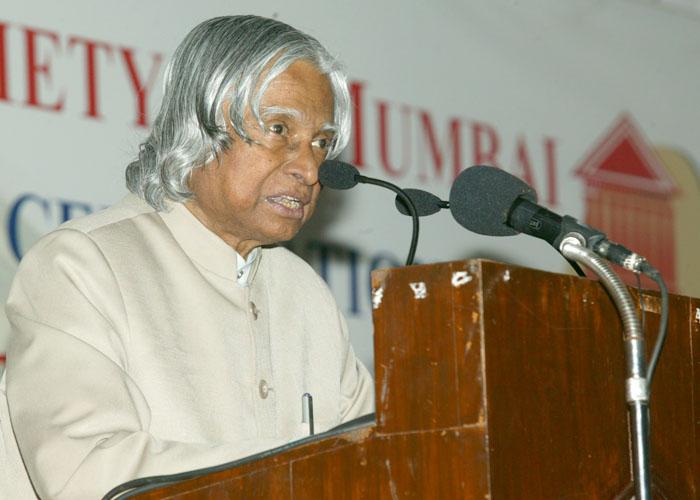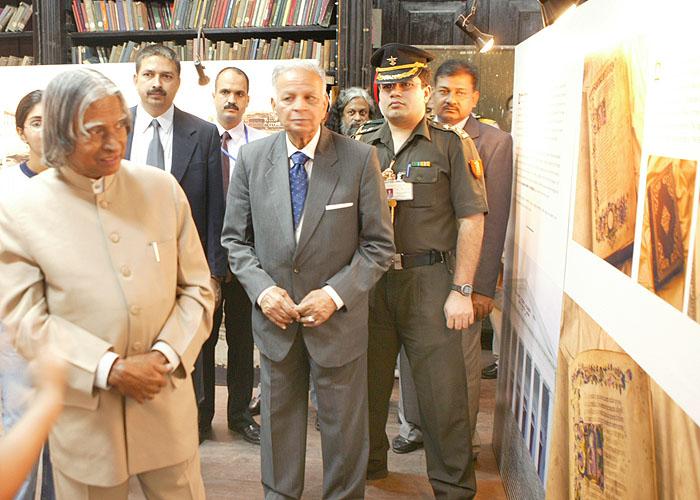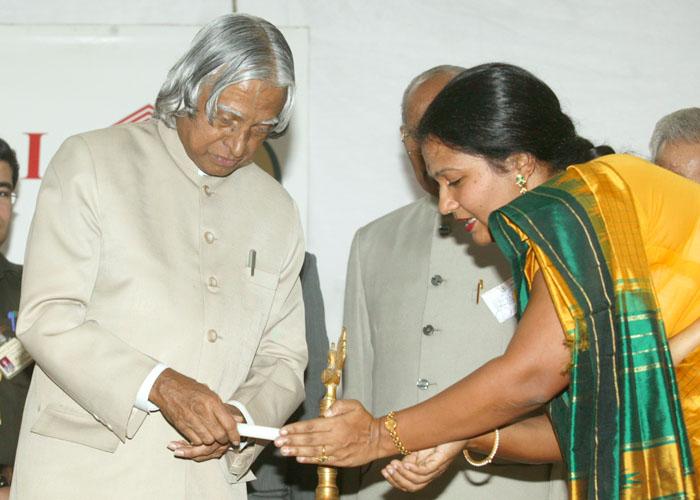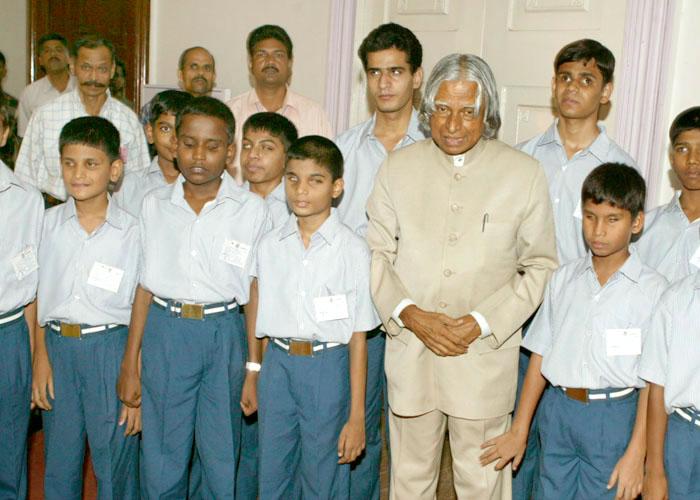Address At The Closing Ceremony Of The Bi-centenary Celebrations Of The Asiatic Society Of Mumbai
Mumbai : 18-11-2004
Bridging civilizational heritage and modern life of India
I am delighted to participate in the bi-centenary celebrations of the Asiatic Society of Mumbai. I greet the organizers, office bearers and members of the Asiatic Society, academicians, industrialists and distinguished guests. I am happy to note that the Society has been promoting knowledge, particularly connected with India during the last two centuries.
The main resource of the Asiatic Society is its historical tradition of intellectual meets and rich library with large collection of books. Over the years, the Asiatic Society has been acquiring medical and literary books. It has a collection of nearly 2.5 lakhs books, receives nearly 150 current periodicals and has 80,000 bound volumes of periodicals and maps. Most of the collections are of importance including fourteenth century illustrated manuscript of Dante Alighieri?s ?Divine Comedy? in the original Italian. Addition to the library has also been made through many educationists and philanthropists.
On this occasion, I feel that preserving the resource of Asiatic Society and making it available to the people has to be the mission for the Asiatic Society. Today, the technology has become available for digitization of books and creation of a full fledged digital library.
Digital library initiatives in India
There is a mission of Digital library web portal to create a portal for digital library of India piloted by the Ministry of Communication and Information Technology (MCIT) with IISc, Bangalore and Carnegie Mellon University, Pittsburgh, USA as partners for fostering creativity and free access to all human knowledge. This digital library as a first step will create a free-to-read searchable collection of one million books by 2005 in India. This library was launched in 2003. Prof. N Balakrishnan, Chief Coordinator of Digital Library of India informs me that, so far 20 centers are operational throughout the country; over 80,000 books have been digitized of which nearly 45,000 are in 9 Indian languages. In the library of Rashtrapati Bhavan, which is part of the Digital Library of India, we have so far digitized two million pages and also we are digitizing our official records leading to e-governance implementation. The data will be available for use by different institutions in the country and abroad, depending upon their needs. The programme is progressing in the right direction, but it needs an impetus to meet the targets of 2005. Digital Library of India will unite the institutions and the people. Digital library is where the past meets the present and creates a future.
Digital Libraries are not the digital equivalents of the present day library. They would include, besides the books, manuscripts and journals, information and our heritage in all other forms including speech, folk songs, paintings and carvings. It is important that we take on this mission of integrating all forms of knowledge and culture into our Digital Library. I would suggest the Asiatic Society to have a collaborative arrangement with the Indian Institute of Science, Bangalore, for digitizing the collection of books, manuscripts and journals in a phased manner. Fortunately, there are more books in this Library which are older than 60 years and are beyond the purview of Copyright Act. Hence those can be digitized and made available to members of this Society and other leading educational institutions in the country. This, I consider, will be a great educational service to the nation by the Asiatic Society, Mumbai.
Interactive Museum
The Asiatic Society can create a museum attached to the library having valuable collection of 11,830 coins, antiquities, geological specimen and archaeological relics. I would suggest that the Society can organize research work on these collections including digitization of their print forms in three dimensions, for enabling it?s availability to the future generations.
While planning the museum, it should be organized in such a way that, when one enters the museum, a sense of inquisitiveness gets created by the environment, which will make the visitor comfortable and feel great, enthusiastic and create a sense of pride about the Indian culture and it?s past. The exhibits must induce a process of understanding multifaceted dimensions of the specimens and relics. The goodness of the museum must make the visitor to linger on the thoughts. It should ignite them and give them solace and peace in many directions. It should flow to others as well spreading serenity, peace and uplifting the atmosphere which will promote a feeling of divinity.
Each section of the museum may be equipped with LCD displays and a multimedia presentation ? giving the salient features of that gallery, cultural impact, and historical facts behind exhibits ? so that the message reaches the minds of the people and becomes a source of inspiration.
Missions for Asiatic Society
Since the Society organizes seminars, workshops, and public lectures by outstanding scholars, it can widen its scope for creating public opinion on various current issues through brain storming sessions and the recommendations of such meetings can be submitted to the Government which may become an input for the decision making process. The experiences, growth and activities of the Asiatic Society which have occurred during the last two centuries should be compiled and brought out as a historical document for reference by the future generations.
The collection of 200 years provides a wealth of knowledge to the society. The Asiatic Society should find techniques through which this knowledge can be packaged and provided to the members and other citizens in a form which can be understood and applied. Also, it should enable use of modern technology for preservation and dissemination of knowledge to various strata and sections of the society. This will be a great service by this Society.
Conclusion
Asiatic society should become a place where great minds meet. It should establish the connectivity between Indian civilizational heritage and the modern way of life of post Rabindra Nath Tagore era and become the guardian angel for preserving this unique heritage. The society can also enable evolution of enlightened citizens in the country through promoting value based education, work for religion transforming into spirituality and facilitate promotion of rural development projects.
Asiatic Society with its long history has to decide what the Society will stand for during the next 50 years. It has to be an active institution participating in the national vision of transforming India into a developed nation. How will it participate? I have the following suggestions. The developed nation refers to economic prosperity. This alone is not adequate. India?s civilizational heritage has to be integrated with the societal life. That means, the economic prosperity and a righteous life in families are essential: Where there is righteousness in the heart, There is beauty in the character.
When there is beauty in the character,
There is harmony in the home.
When there is harmony in the home,
There is order in the nation.
When there is order in the nation,
There is peace in the world.
On the occasion of the bi-centenary celebrations of the Asiatic Society, I wish all the members success in their mission of creating an enlightened society.
May God bless you.




